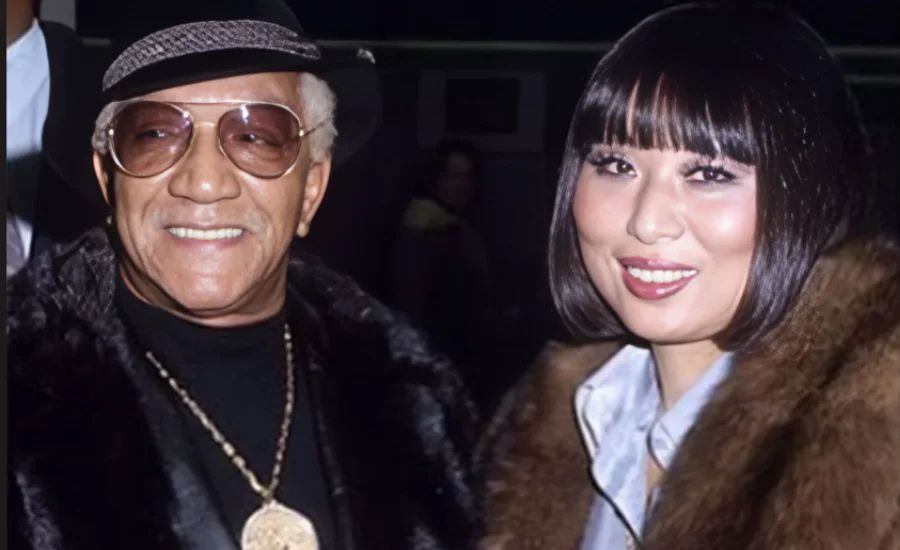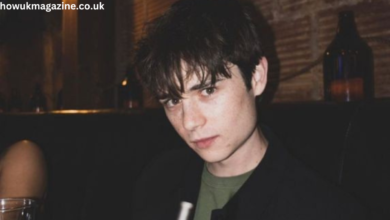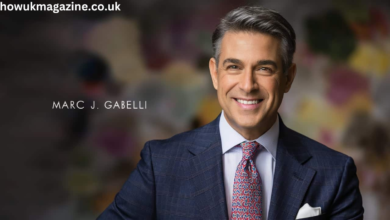Introduction to Yun Chi Chung
Yun Chi Chung is more than just a name; it embodies a rich tapestry of history, culture, and tradition. Originating from a blend of various influences, Yun Chi Chung represents a unique intersection of art, philosophy, and community spirit. This article delves into the multifaceted aspects of Yun Chi Chung, offering insights into its significance and the cultural practices surrounding it.
At its core, Yun Chi Chung reflects the ethos of a community that values artistic expression, harmony, and mutual respect. Whether it’s through music, dance, or visual arts, the essence of Yun Chi Chung can be seen as a celebration of life and human connection. In this exploration, we’ll unpack the origins, cultural practices, and contemporary relevance of Yun Chi Chung.
Historical Origins of Yun Chi Chung

The roots of Yun Chi Chung trace back centuries, intertwining with various historical movements and cultural shifts. Initially, it emerged as a regional tradition, deeply influenced by the local environment and social dynamics. The term derives from ancient dialects, symbolizing the merging of different artistic forms and philosophies.
One of the primary influences on Yun Chi Chung has been the spiritual practices of the region. Local beliefs and rituals have played a crucial role in shaping its identity, fostering a sense of community and shared purpose. Over the years, these practices evolved, incorporating elements from neighboring cultures, which enriched the tradition and made it more inclusive.
In examining its historical context, it’s essential to recognize the role of key figures who contributed to the development of Yun Chi Chung. Artists, philosophers, and community leaders have all played pivotal roles, in advocating for the preservation and evolution of this cultural heritage. Their efforts have ensured that Yun Chi Chung remains a living tradition, adaptable to the changing times while staying rooted in its historical foundations.
Cultural Practices and Expressions
Yun Chi Chung is characterized by a diverse range of cultural practices, each reflecting the community’s values and artistic inclinations. Music, dance, and visual arts serve as the primary vehicles for expression within this tradition. These forms are not only artistic endeavors but also serve as mediums for storytelling, preserving history, and fostering connections among community members.
Musical Traditions
Music plays a central role in Yun Chi Chung, often serving as a backdrop for various communal events and celebrations. The sounds are typically characterized by a mix of traditional instruments and contemporary influences, creating a unique auditory experience. Local musicians often collaborate, blending their styles to produce innovative compositions that resonate with both younger and older generations.
The themes explored in Yun Chi Chung’s music often revolve around love, nature, and the human experience. Songs serve as both entertainment and a means of educating listeners about cultural values and historical events. This storytelling aspect is crucial, as it helps keep the community’s heritage alive and relevant.
In addition to traditional performances, music workshops, and festivals are vital for promoting Yun Chi Chung. These events encourage participation from all ages, fostering a sense of unity and shared identity. The communal aspect of music-making allows individuals to express themselves while also feeling connected to their heritage.
Dance as a Form of Expression
Dance is another vital element of Yun Chi Chung, often used to convey emotions and narrate stories. Traditional dances vary widely in style, each telling its own tale through intricate movements and rhythms. These dances are typically performed during festivals, weddings, and other communal gatherings, creating a vibrant atmosphere filled with joy and celebration.
The choreography often incorporates symbolic gestures that reflect the community’s beliefs and values. Dancers are trained to convey emotions that resonate deeply with their audiences, enhancing the overall experience. This connection between the performer and the viewer is a hallmark of Yun Chi Chung, emphasizing the importance of shared cultural experiences.
Moreover, dance workshops and classes are instrumental in passing down these traditions to younger generations. By engaging the youth in dance, the community ensures the continuity of its cultural heritage. These initiatives foster creativity and allow individuals to explore their identities while remaining rooted in tradition.
Visual Arts and Craftsmanship
Visual arts also hold a significant place in Yun Chi Chung, encompassing a wide range of styles and techniques. From painting and sculpture to pottery and textile arts, each form reflects the community’s aesthetic sensibilities and historical narratives. Local artists often draw inspiration from nature, folklore, and everyday life, creating pieces that resonate with both personal and communal experiences.
Craftsmanship is particularly celebrated within Yun Chi Chung, with artisans dedicating themselves to preserving traditional techniques. This commitment to craftsmanship not only ensures the quality of the art produced but also reinforces the cultural significance of these practices. Workshops and exhibitions often showcase the works of local artisans, providing a platform for them to share their stories and connect with the community.
In recent years, there has been a resurgence of interest in visual arts within Yun Chi Chung. Contemporary artists are blending traditional techniques with modern themes, creating a dynamic dialogue between the past and the present. This evolution reflects the community’s adaptability and openness to new ideas while maintaining a strong connection to its roots.
The Philosophical Underpinnings of Yun Chi Chung
The cultural expressions of Yun Chi Chung are deeply intertwined with its philosophical foundations. Central to this tradition is the belief in harmony, balance, and interconnectedness. These principles guide not only artistic endeavors but also the way individuals interact with one another and their environment.
Harmony and Balance
At the heart of Yun Chi Chung lies the concept of harmony, which is reflected in its artistic practices. Whether in music, dance, or visual arts, creators strive to achieve a sense of balance that resonates with audiences. This harmony is not just about aesthetic appeal; it also symbolizes the interconnectedness of all aspects of life.
The pursuit of balance extends beyond the arts into everyday life. Community members are encouraged to cultivate harmonious relationships, fostering an environment of mutual respect and understanding. This ethos of harmony is vital for maintaining social cohesion and ensuring the longevity of cultural practices.
Furthermore, this philosophical framework promotes the idea of living by nature. The community recognizes the importance of sustainability and strives to maintain a balance with the natural world. This respect for the environment is evident in various cultural practices, from the materials used in art to the themes explored in storytelling.
Interconnectedness and Community
Interconnectedness is another cornerstone of Yun Chi Chung’s philosophy. The belief that all individuals are part of a larger whole fosters a sense of responsibility towards one another. This principle is evident in communal events, where participation and collaboration are emphasized.
In Yun Chi Chung, art is not seen as an individual endeavor but rather as a collective expression. This communal approach enriches the artistic experience, allowing for diverse perspectives and voices to emerge. Artists often collaborate on projects, blending their unique styles to create something greater than the sum of its parts.
Moreover, the emphasis on interconnectedness extends to the relationships between different cultural practices. Music, dance, and visual arts often intertwine, creating a holistic cultural experience. This integration reflects the community’s belief that all forms of expression are valuable and contribute to a richer understanding of life.
Contemporary Relevance of Yun Chi Chung
As society evolves, so does the significance of Yun Chi Chung. In the modern context, it faces both challenges and opportunities, prompting a re-examination of its place in contemporary culture. This section explores how Yun Chi Chung is navigating the complexities of the 21st century while remaining true to its roots.
Adaptation and Innovation
One of the most notable aspects of Yun Chi Chung’s contemporary relevance is its capacity for adaptation and innovation. Artists and community leaders recognize the importance of keeping traditions alive while also embracing new ideas and technologies. This adaptability has allowed Yun Chi Chung to remain relevant in an ever-changing cultural landscape.
For instance, many musicians are now incorporating digital tools into their compositions, blending traditional sounds with modern production techniques. This fusion creates a fresh auditory experience that appeals to younger audiences while honoring the heritage of Yun Chi Chung. Similarly, visual artists are exploring new mediums and platforms to showcase their work, reaching broader audiences and fostering engagement.
The willingness to innovate does not come at the expense of tradition; rather, it enhances the overall cultural experience. By embracing change while remaining rooted in their values, practitioners of Yun Chi Chung demonstrate the resilience and vitality of their heritage.
Preservation Efforts
Alongside adaptation, preservation efforts are vital for ensuring the longevity of Yun Chi Chung. Community members are actively engaged in initiatives aimed at documenting and safeguarding their cultural practices. This includes archiving traditional music, dance forms, and visual arts, as well as educating younger generations about their significance.
Workshops and cultural festivals serve as platforms for sharing knowledge and fostering appreciation for Yun Chi Chung. These events not only celebrate the tradition but also encourage dialogue between generations, ensuring that the cultural practices are passed down effectively. Additionally, partnerships with educational institutions and cultural organizations help amplify these efforts, reaching wider audiences and promoting cultural understanding.
Preservation is not merely about maintaining the status quo; it is about creating a living tradition that evolves with time. By finding ways to keep Yun Chi Chung relevant, community members ensure that future generations can meaningfully engage with their heritage.
Global Connections and Cultural Exchange
In today’s interconnected world, Yun Chi Chung also has the opportunity to engage in cultural exchange on a global scale. The internet and social media have made it easier for artists to share their work and connect with audiences beyond their local communities. This exposure allows Yun Chi Chung to influence and be influenced by other cultural traditions, enriching its practices.
Artists from different backgrounds are collaborating, creating unique fusion projects that celebrate diversity while exploring common themes. This exchange fosters a sense of solidarity among communities, highlighting the universal nature of artistic expression. Moreover, it encourages a dialogue that promotes cultural understanding and appreciation.
While global connections present exciting opportunities, they also raise important questions about cultural authenticity and appropriation. Practitioners of Yun Chi Chung must navigate these complexities thoughtfully, ensuring that their heritage is respected and valued in the broader cultural landscape.




